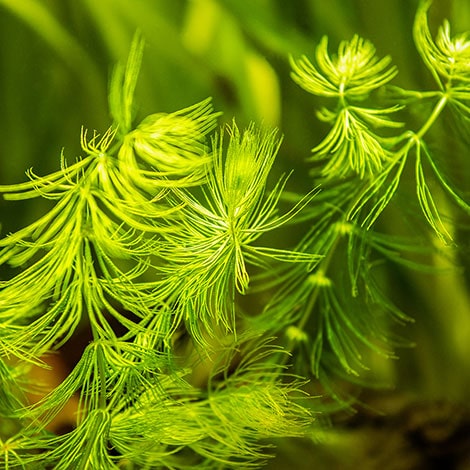Last Updated: April 10, 2024
Aquatic plants are like nature’s water filter. Just like terrestrial plants help clean the air, plants for ponds help clarify water. Water purification plants release oxygen and absorb excess nutrients, inhibiting muck and algae overgrowth.
We can’t overstate the benefits of pond plants in a water garden or backyard pond for their many benefits. If the water in your backyard pond or water garden looks cloudy or has algae issues, adding aquatic plants can help.
How Do Plants Purify Pond Water?
Water plants for ponds cleanse water in various ways, depending on the type of plant. Adding an array of pond plants also attracts birds, insects, pollinators, and other wildlife, adding more vibrancy and life to your pond or water garden. Pond plants:
- Filter out debris, organic matter, and fish waste, keeping your pond water cleaner
- Absorb excess nutrients, which helps prevent algae blooms
- Shade the water from sunlight, protecting fish and inhibiting algae growth
- Release oxygen into the water
Note: While plants are helpful for oxygenation, to effectively aerate your pond, you’ll need a complete aeration system.
Water-purifying plants are good for the environment and your well-being, too! Aquatic plants add colorful and soothing vibrancy to your water garden or pond. They enhance the beauty of your backyard space and make it even more enjoyable to spend time outside.
Pond plants can also soften hardscapes such as stone and bricks. They camouflage elements in and around your pond (like pumps, filters, and other pond equipment,) providing a more natural look and feel.
Types of Water Purification Plants for Ponds
There are different types of pond plants that clean water in unique ways.
- Submerged Plants live underwater, rooted to the bottom of your pond. By absorbing excess nutrients, they effectively control algae and aquatic weed populations.
- Floating Plants help block sunlight, providing shade for fish and inhibiting algae growth. These plants have floating roots, making them easy to add to your pond by placing them on the water.
- Water Lilies and Water Lotus are typically planted directly in the soil or a pot submerged in the water. They feature stunning pond flowers that delicately grace the surface.
- Bog Plants take root in the soil underwater near the pond’s edge, with the bulk of vegetation growing above the water. Water-purifying bog plants filter organic matter that collects around the perimeter of your pond, clarifying the water while providing food and shelter for wildlife.
The types of plants you choose for your pond or water garden will depend on your hardiness zone. Knowing your zone will help you select plants best suited for your location. Aquatic plants are sensitive to varying temperatures, but some can winter over with proper plant maintenance.
In addition to your hardiness zone, you’ll want to consider these factors when choosing plants for your pond:
- Sun or Shade: Like their terrestrial counterparts, some aquatic plants prefer full sun, while others need some shade.
- Deep or Shallow: Lilies and lotus prefer deeper water once established, while most bog plants just want to get their roots wet. Be sure to follow planting directions, as many deep-water-loving plants prefer the shallows when they are just starting.
- Flow or No Flow: Water flow rate is another vital factor that can get overlooked. Some aquatic plants love moving water, while others require stillness to thrive.
Aquatic Planting Tools
When ordering plants for your pond, you’ll also need planting materials and tools for the best results. Be sure to use Aquatic Planting Media designated for water gardens, as traditional potting soil will float and cloud your pond water.
- Submerged Plants: Sow in Plant Bags or other planters tied to weights and drop them into the pond.
- Floating Plants: Those with floating roots can simply be set in the water.
- Lilies and Lotuses: These beauties grow best in pots, like our Planting Kits for Water Lilies & Lotus. When the leaves reach the surface, you can move them to a deeper area of your pond.
- Bog plants: Sow in plant bags around the edges of your pond, or try our Floating Island Planter.
Additionally, ensure you fertilize aquatic plants with
CrystalClear Thrive to give them the nutrients they need to produce bountiful blooms and healthy foliage.
When selecting pond plants, the early bird gets the worm–or, in this case, the plant. Since pond keeping is seasonal, some plant varieties are unavailable later in the year. To ensure you get what you want, call us to pre-order early, and we’ll hold them at our nursery until planting season.
Still Curious About Water Purifying Plants for Ponds?
Our Pond Care Experts can help you determine which beneficial pond plants to add to your backyard pond or water garden. Contact our experts to answer all your pond plant care questions!
Read More Related Articles
How to Pick Aquatic Plants
Adding Aquatic Plant Tips
Why Aerate Your Water Garden


